Table of Content
Just as a building is incomplete without a strong roof, so are home interiors incomplete without a good roof. The ceiling or fifth wall is gaining more and more momentum in the world of interior design that always prefers the four walls and the floor. Although False ceiling designs have been around for years, they are making a comeback in terms of styles, finishes, technology, and fantasies. Before diving into the designs, it is best to lay down a foundation of what it is, who it is, and what its pros and cons are.
What is a False ceiling?
In simple terms, a False ceiling is a recessed ceiling False below the original ceiling of a room or house. It is usually False by wooden or metal frames, and the illusion that it brings with a low ceiling, and sometimes as portions of the original ceiling are projected, have earned it the nickname 'False ceiling'.  They are generally installed at least 8 inches from the original ceiling. They are versatile enough to be built in homes of any size; It is about the cleverness of the shapes and the available space.
They are generally installed at least 8 inches from the original ceiling. They are versatile enough to be built in homes of any size; It is about the cleverness of the shapes and the available space.
Popular false ceiling materials
Gypsum board False ceiling
Gypsum is a descendant of calcium and is used in the construction of lightweight ceilings. They usually come in the form of panels that are then False from the ceiling with iron or wooden frames and applied to a coat of paint. 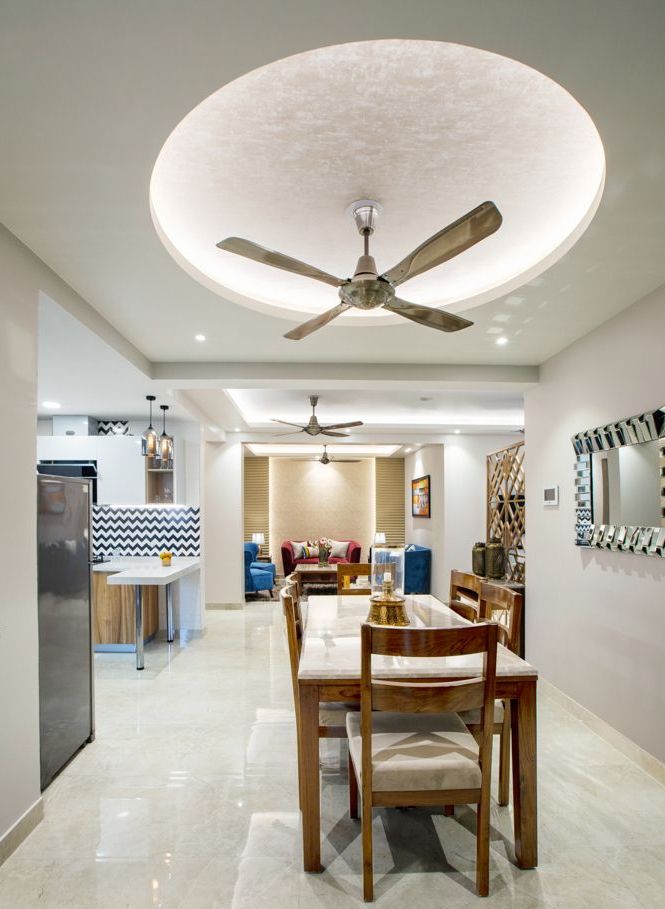 False ceiling cost per square foot: INR 50 - 150
False ceiling cost per square foot: INR 50 - 150
False ceiling from Plaster of Paris
This is a more popular variety of surfaces, especially since PoP is easy to shape and obtain. It is durable and well-insulated even in various weather conditions. 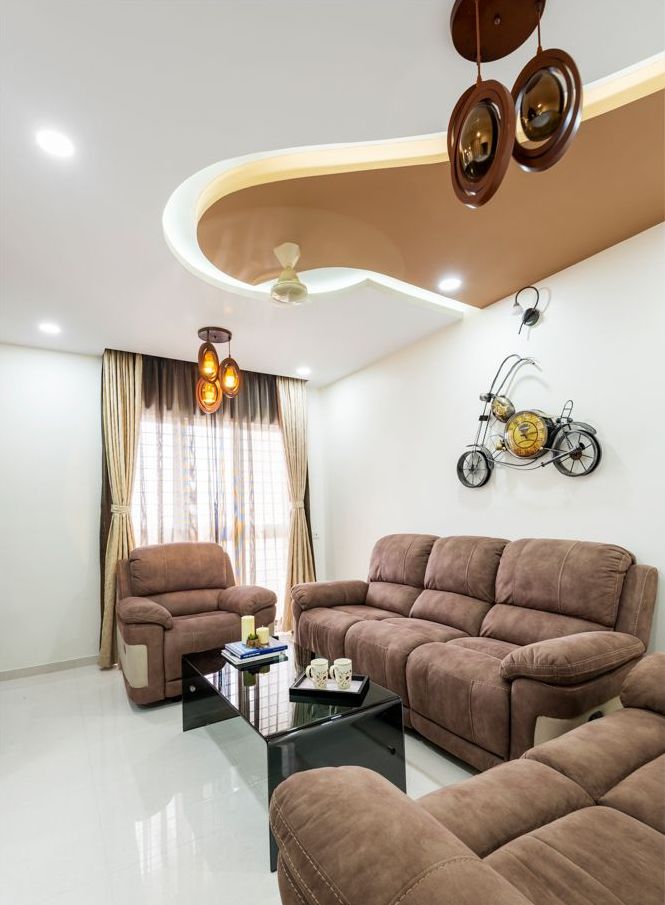 False ceiling cost per square foot: INR 50 - 150
False ceiling cost per square foot: INR 50 - 150
Wooden False ceiling
Due to its natural grain and texture, wood has found its way to the fifth wall several times in the form of a roof. It's a little more expensive, so you'll likely see it in apartment buildings rather than large commercial projects. 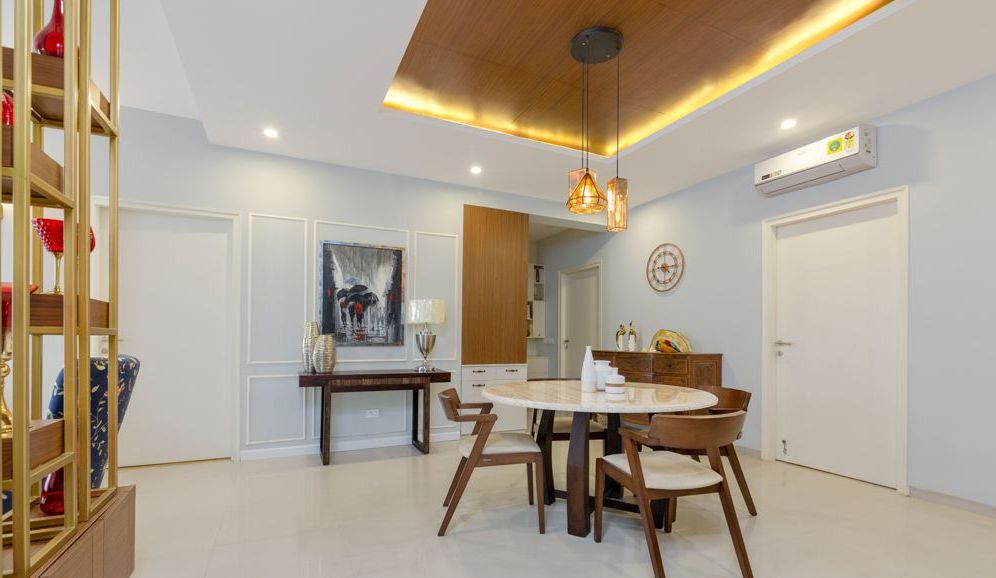 False ceiling cost per square foot: INR 80 - 650 Among these, the first two are usually the preferred roof in Indian homes as they are the most customizable.
False ceiling cost per square foot: INR 80 - 650 Among these, the first two are usually the preferred roof in Indian homes as they are the most customizable.
Types of false ceiling designs
To help you evaluate the ceiling design of your choice, here's a summary of both the classic design and the trend:
Single-layer False ceiling
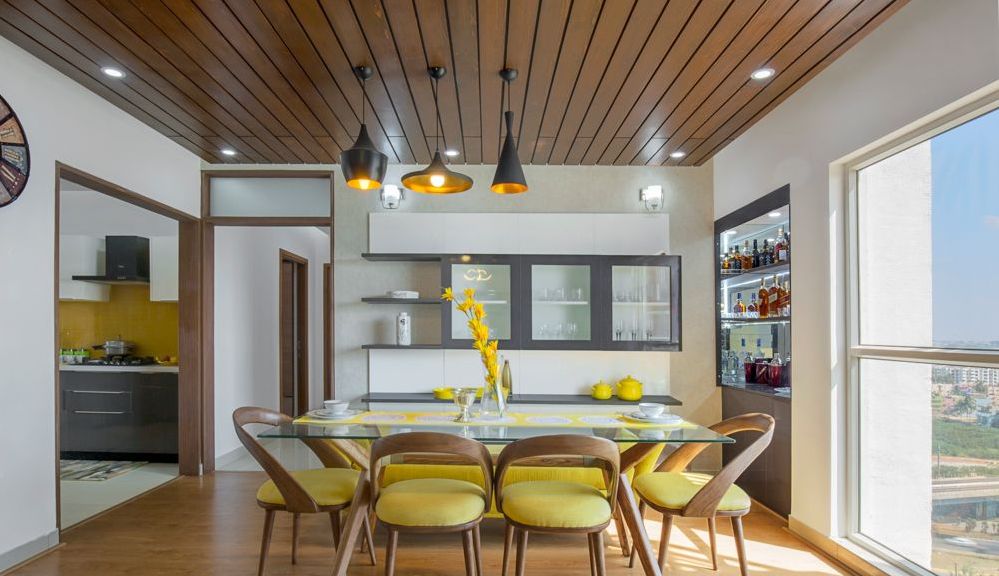 This type of ceiling is a surefire way to liven up a room without going everywhere. Homeowners can choose to leave it blank on a white ceiling, as this adds dimension without necessarily overwhelming the space. However, if you want to go out with a bang, you can choose from a variety of colors, shapes, textures, and lighting options to get immediate attention. This is a great trick to distract from a small space or an area that doesn't do much in terms of decorating.
This type of ceiling is a surefire way to liven up a room without going everywhere. Homeowners can choose to leave it blank on a white ceiling, as this adds dimension without necessarily overwhelming the space. However, if you want to go out with a bang, you can choose from a variety of colors, shapes, textures, and lighting options to get immediate attention. This is a great trick to distract from a small space or an area that doesn't do much in terms of decorating.
Multilayer False ceiling
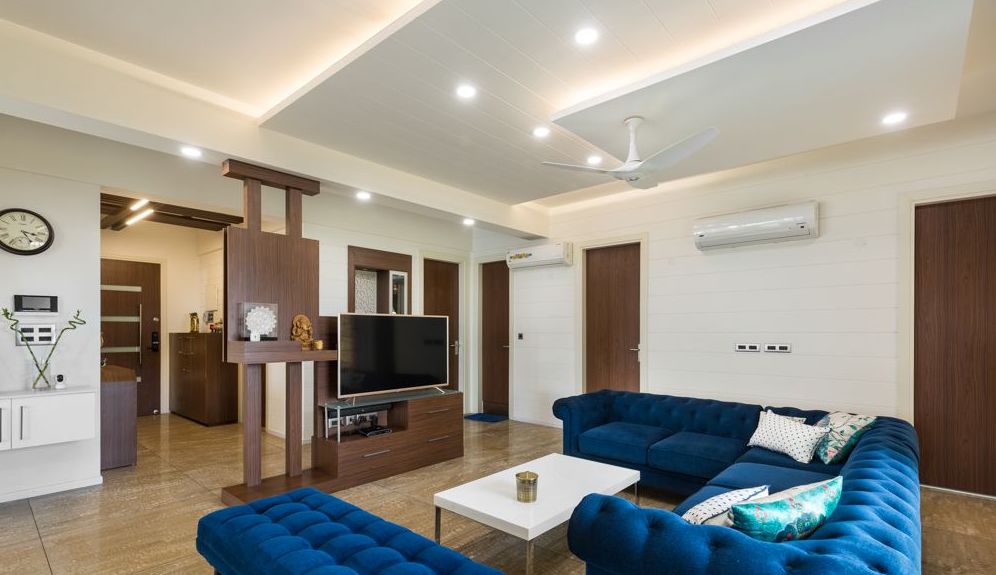 Layering is a great way to try a truly versatile medium to create a completely custom roof. In larger rooms, the multi-tiered mid-ceiling creates drama and a sense of luxury, while those near the edges are more likely to make space appear more spacious. The multi-layered ceiling also opens up new avenues of lighting, color, and shape-based experiments, so don't be afraid to show off your creative muscles!
Layering is a great way to try a truly versatile medium to create a completely custom roof. In larger rooms, the multi-tiered mid-ceiling creates drama and a sense of luxury, while those near the edges are more likely to make space appear more spacious. The multi-layered ceiling also opens up new avenues of lighting, color, and shape-based experiments, so don't be afraid to show off your creative muscles!
False ceiling plus-minus POP
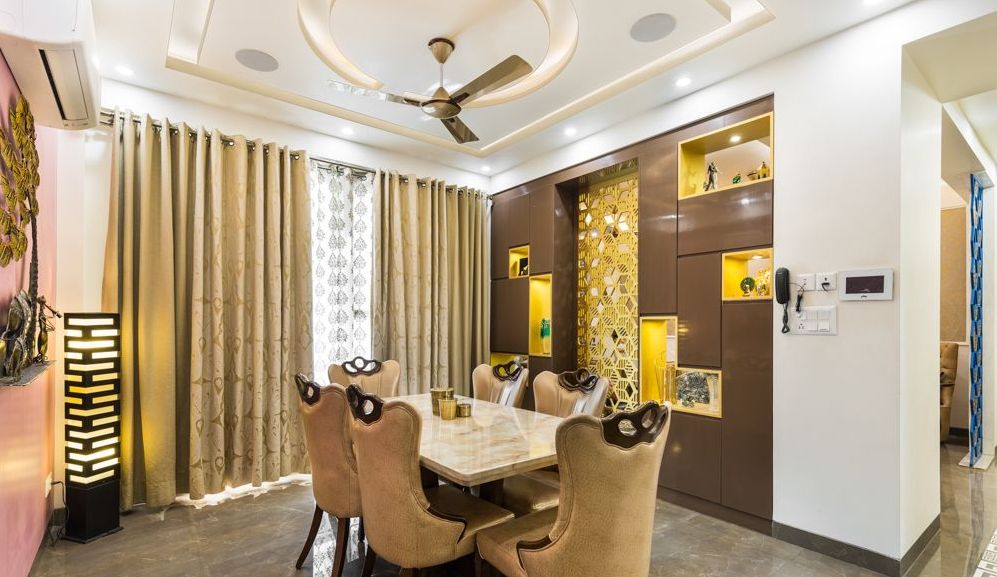 The additive ceiling design is entirely made using POP, with elements that either protrude from a regular False ceiling or are installed instead. This direction is more elaborate, so be sure to consider your current decorating plans and how much space you have before you mess around with this idea.
The additive ceiling design is entirely made using POP, with elements that either protrude from a regular False ceiling or are installed instead. This direction is more elaborate, so be sure to consider your current decorating plans and how much space you have before you mess around with this idea.
Coffered False ceiling
 Boxes are sunken square or square panels attached to the ceiling. In addition to instantly bringing drama to the space, this ceiling design also creates the illusion of a greater ceiling height and multiple dimensions within the room.
Boxes are sunken square or square panels attached to the ceiling. In addition to instantly bringing drama to the space, this ceiling design also creates the illusion of a greater ceiling height and multiple dimensions within the room.
Forms of False ceilings
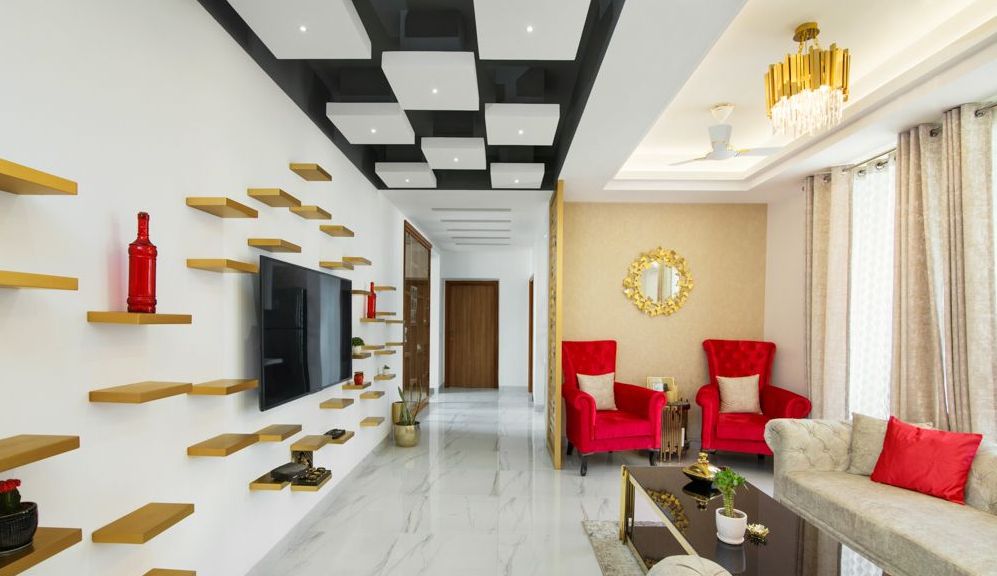 POP used in False ceilings is known for its modulating properties, making it ideal for almost any type of ceiling design. However, there are other False ceilings materials that can be molded and customized as well. Take a look at some of the more popular false ceiling shapes:
POP used in False ceilings is known for its modulating properties, making it ideal for almost any type of ceiling design. However, there are other False ceilings materials that can be molded and customized as well. Take a look at some of the more popular false ceiling shapes:
- Ceiling Box - This design features a multi-tiered ceiling with recessed and square lamps.
- Contour Ceiling - This minimalist design extends around room corners and is ideal for homes with a low ceiling. You can also find room for a chandelier or pendant lights in this design.
- Engineering Design - This design requires hanging panels for each piece to be assembled. It is a modern design that gives the room an elegant touch.
- Complex lattice: installing a grid in a False ceiling, It provides subtle demarcation of open space and adds to the aesthetics of the room.
- Wood Slats - Wooden False Ceilings are a preferred, albeit more expensive, option among homeowners. It is also one of the best options for insulating ceilings.
- Inverted cove: a great option for reducing high ceilings. It works well in all rooms and is ideal for ambient lighting. You can also find space E for the chandelier in this design.
Pros and cons of a False ceiling
If you are still in doubt about whether or not to install a roof, here are some advantages and disadvantages that should help you make the decision:
Advantages of False ceiling
- Excellent Acoustics - Adding an extra layer to the original ceiling creates better acoustics, making it an ideal design treatment for living rooms, home theaters, and sound and video rooms.
- Hide cables: The False ceiling is the ideal place to hide cables and pipes. The False ceiling can also be equipped with hidden or hidden lighting.
- Make High Ceilings Low: For a high vertical space that dwarfs the furniture in the room, you might consider installing a False ceiling to restore proportions.
- Room Isolation: For homes located in cooler regions of the country, this provides the added advantage of room insulation. The additional layer creates a space between it and the original layer, which traps the air and cools the room. It also improves the operation of the air conditioners. It reduces space in square feet to keep cool and cut energy bills.
Disadvantages of False ceiling
- Installation Requires Professional Precision - False ceilings require precision in design, calculation, and installation and should only be installed by experts.
- Not possible for rooms with a low ceiling - you must be at least 8 inches from the original wall. Therefore, it is always recommended that the ceiling height be 11 feet or more. For compact homes, a partial ceiling in one corner of the room may be sufficient.
The place for installing a False ceiling
There is virtually no limit to where you can install a roof in your home, but popular options are: # 1: The living room 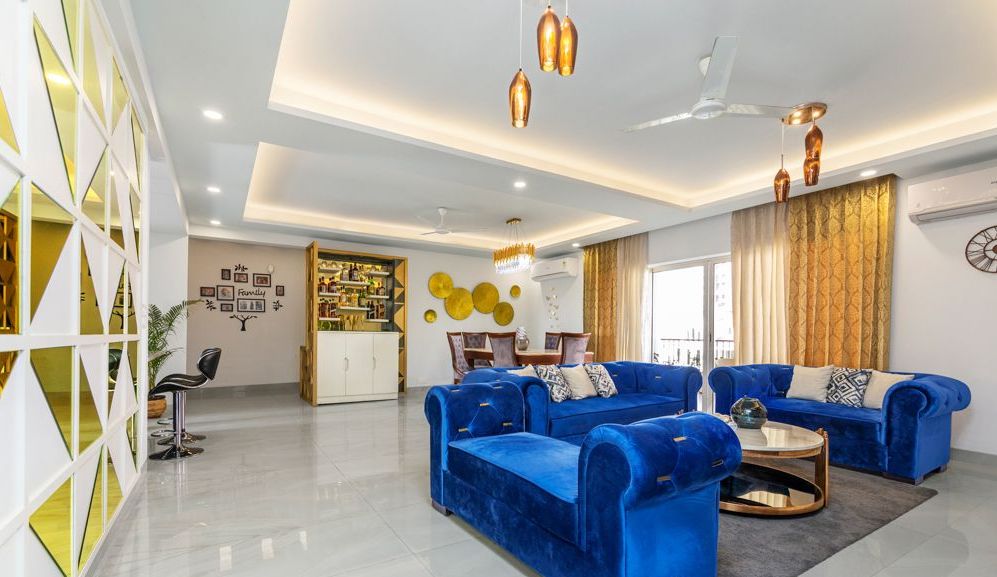 This makes the hallway great and instantly suggests the amount of vertical space available, making the room appear either larger than it is or just right. # 2 bedrooms
This makes the hallway great and instantly suggests the amount of vertical space available, making the room appear either larger than it is or just right. # 2 bedrooms 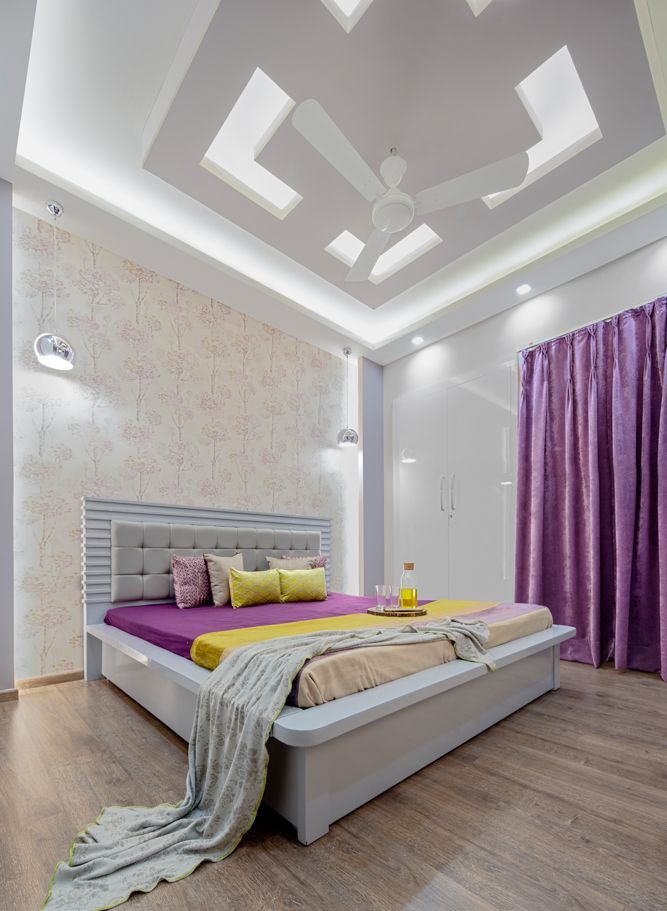 A hanging ceiling over a bed, or running vertically between the floor and the wall, is an amazing way to add drama to a room without compromising the comfort and privacy that a bedroom should be. # 3: Kids' room
A hanging ceiling over a bed, or running vertically between the floor and the wall, is an amazing way to add drama to a room without compromising the comfort and privacy that a bedroom should be. # 3: Kids' room 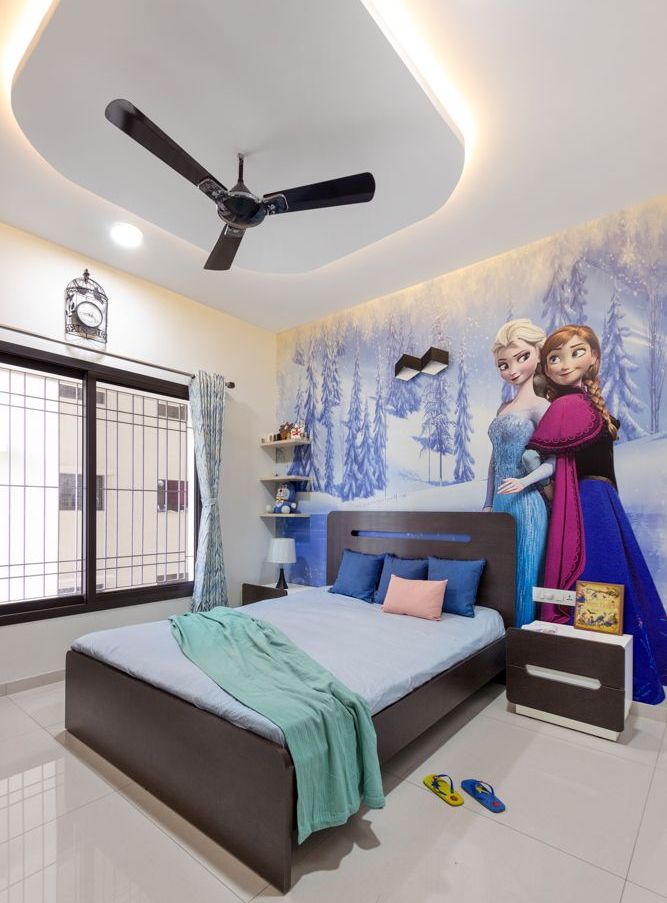 Instead of playing it safe with pink and blue, consider taking all of the colors and throwing them into a roof. This keeps the room free from potentially dangerous decor and furniture elements while communicating with space, in terms of design. # 4: The Kitchen
Instead of playing it safe with pink and blue, consider taking all of the colors and throwing them into a roof. This keeps the room free from potentially dangerous decor and furniture elements while communicating with space, in terms of design. # 4: The Kitchen 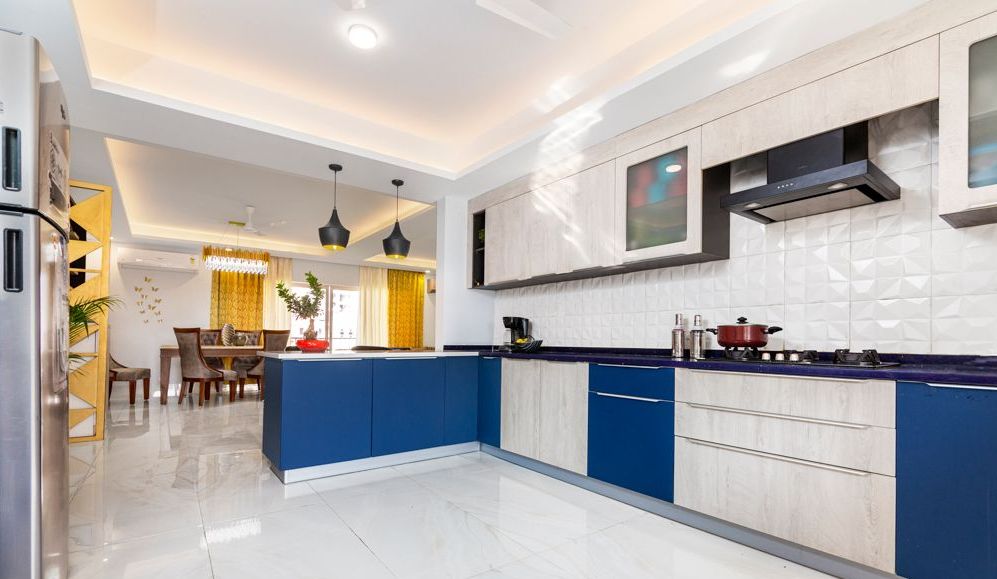 Not for the safe guys, a false ceiling in the kitchen is a sure way to add elegance. Turn a task-oriented space into a space that scores points for a funky design. Not only does it look stylish, but it also provides extra lighting without using a wall or counter space. # 5: The dining room
Not for the safe guys, a false ceiling in the kitchen is a sure way to add elegance. Turn a task-oriented space into a space that scores points for a funky design. Not only does it look stylish, but it also provides extra lighting without using a wall or counter space. # 5: The dining room  There's a reason homeowners choose these dining room designs. Lowering the ceiling creates a cozy atmosphere that makes your dining experience more personal and enjoyable. In most cases, the ceiling mimics the material of the dining room table to provide a continuation of the design in the room. The photo above features a POP stained ceiling to look like wood to match the solid wood dining table. # 6: The Pooja room
There's a reason homeowners choose these dining room designs. Lowering the ceiling creates a cozy atmosphere that makes your dining experience more personal and enjoyable. In most cases, the ceiling mimics the material of the dining room table to provide a continuation of the design in the room. The photo above features a POP stained ceiling to look like wood to match the solid wood dining table. # 6: The Pooja room  If you have a pooja or prayer room at home, you know how important good lighting is for this space. In most cases, a pooja room is a small space without windows. Even if they are present, they are most likely covered or clogged. This leaves you with this space-saving design installed with ample overhead lighting.
If you have a pooja or prayer room at home, you know how important good lighting is for this space. In most cases, a pooja room is a small space without windows. Even if they are present, they are most likely covered or clogged. This leaves you with this space-saving design installed with ample overhead lighting.
Frequently asked questions(FAQ) about False ceilings
Does my house need a False ceiling?
It depends on your preference. In addition to their aesthetic appeal, False ceilings are functional properties that improve acoustics, cover unsightly cables and pipes, and can be designed around air conditioning ducts and reduce electricity consumption. In addition to that, you also get fire and moisture resistant designs.
How long does it last?
These custom-designed, premium quality POP and plaster False ceilings will last more than 20 years under normal conditions.
How is it better than traditional lights?
Compared with tube bulbs, bulbs, and track lights, it is economical and energy-efficient in the long term. Its ability to reflect light and spread it to a wider area makes it more efficient than focused lightings such as track lights and tube lights.
The last word
Adding a False ceiling to a new or existing interior design scheme enlivens the space. It also creates a relaxing atmosphere and earns brownie points to support low energy bills! Also Read: Interior Design Hacks for Low Spaces Image Credits: livspace.com

_1697018627.webp)
_1752219110.webp)


_1752218298.webp)


